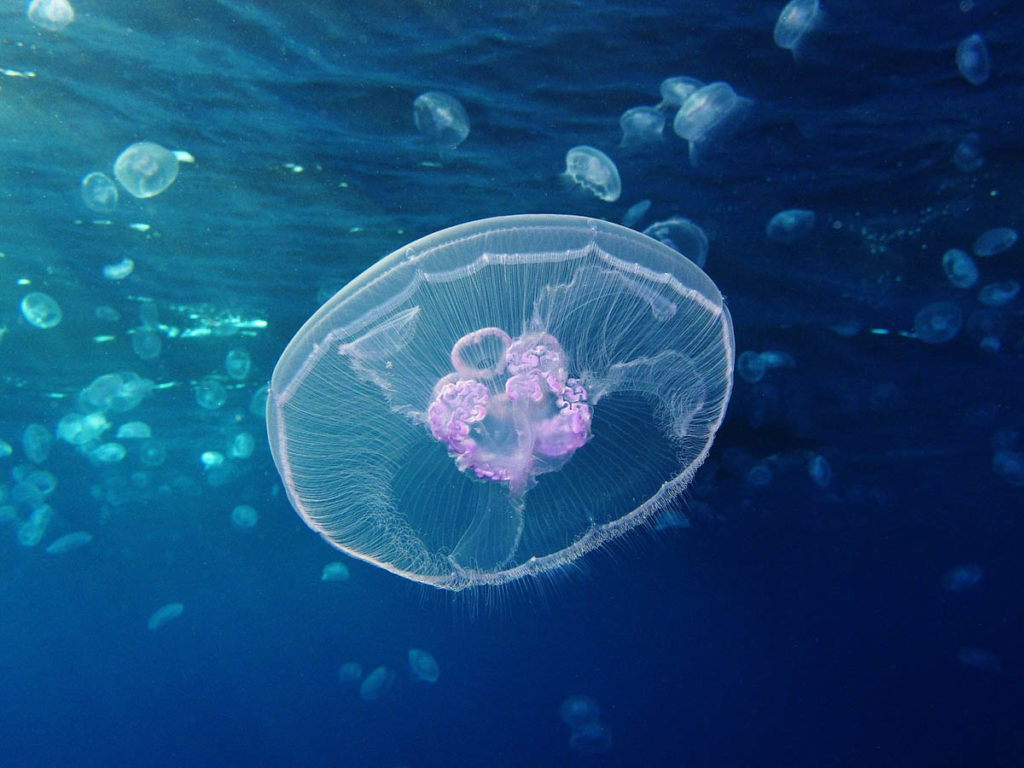Increased observations of Moon Jellyfish In Alaska have been attributed to warmer ocean temperatures and abundant food in the form of zooplankton. Residents have been warned to stay away from the beached jellyfish or risk being stung. The sting of the moon jellyfish is less unpleasant than that of other jellyfish, but it still irritates people, according to specialists.
The moon jellyfish is a translucent white jellyfish with exceptionally dark tentacles and four yellow and pink gonads. Its scientific name is Aurelia Aurita. This jellyfish, which is only 2 -15 in (5 – 38 cm) long, is a translucent but hazardous creature. It is distinguished by a ‘bell’ on the top of its body and long tentacles that it feeds through. It eats three different types of animals: medusae, plankton, and mollusks. These are carnivorous jellyfish. They are mostly found along Europe’s eastern Atlantic coast and North America’s western Atlantic coast. They’re also commonly observed along Canada’s shores. They like the warm coastlines.
The biggest risks they face are overfishing, global warming, and ocean pollution. Their conservation status is considered to be low. The average moon jellyfish lives for 8 – 12 months. They normally swim on the surface, but if they need to dive, they can go as deep as 90 feet (27.4 meters). Moon jellyfish like to live alone most of the time. They do, however, occasionally travel the oceans in packs or groups with other moon jellyfish. A ‘bloom’ is a collection or group of jellyfish.
External fertilization is used to create moon jellyfish. This occurs when female eggs and male sperm are discharged into the water column, where the sperm fertilize the eggs. Larvae hatch from the eggs once they have been fertilized.
Moon jelly fish are preyed upon by birds, fish, and sea turtles. Moon jellyfish are also eaten by humans in several regions, primarily in Southeast Asia. They’re usually brined and dried before being served in strips with soy sauce.
If people come upon a beached moon jellyfish, they should give them a wide berth.







